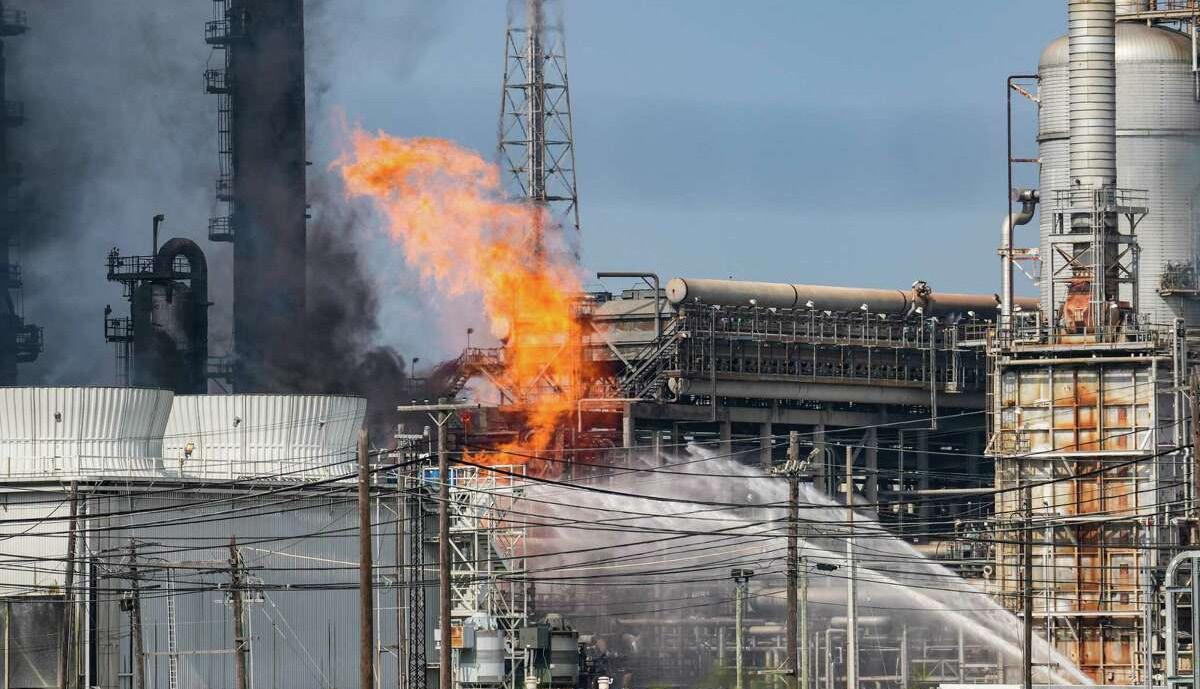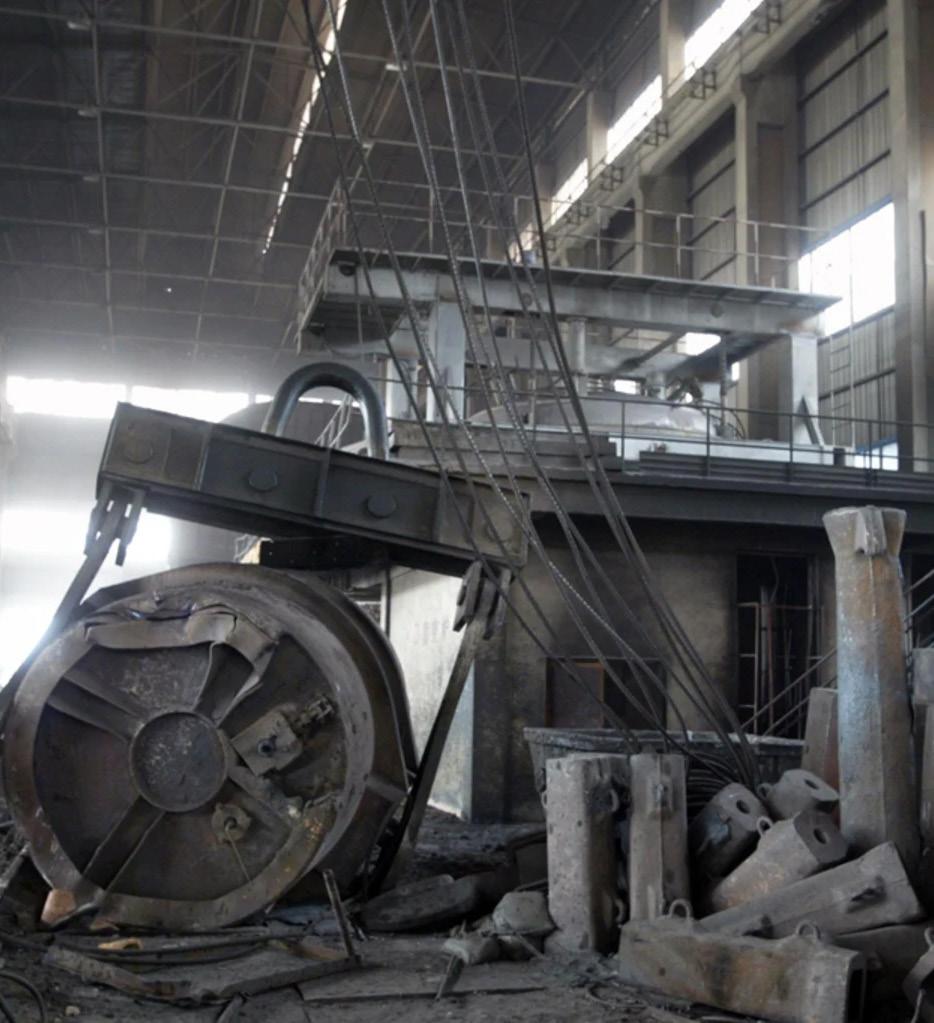
7 minute read
INDUSTRIAL DISASTERS Can They Be Prevented?
The Catalyst researches and provides reports on some of the major industrial incidents that have taken place in past years in the hope that this may stir people to action so that future incidents and subsequent unnecessary losses can be prevented.
APRIL 2023 AIR FRANCE AND AIRBUS acquitted in trail over fatal Rio-Paris 2009 plane crash
Advertisement
On Monday 17th April 2023, a French court cleared Air France and Airbus of involuntary homicide in a criminal trial over the 2009 crash of a flight from Rio de Janeiro to Paris that killed 228 passengers and crew. It took two years to find the plane and its black box recorders on the ocean floor at depths of more than 4,000 mtrs. Readers of The Catalyst are invited to review the summary of the incident below, taken from various reports of the incident, and make up their own minds as to whether the French Court made the correct decision.
For the purposes of this article, the 3 pilots are entitled the Captain, First Officer 1 (FO1) and First Officer 2 (FO 2). PF is the pilot flying and PNF is the pilot not flying the aircraft.
The Incident:
On Sunday 31 May 2009, Flight 447, an Airbus 330 operated by Air France took off at 22.29 hrs to perform a scheduled flight between Riode Janeiro Galeão and Paris Charles de Gaulle airports. Twelve crew members (3 flight crew, 9 cabin crew) and 216 passengers were on board.
The Airbus A330 is designed to be flown by two pilots, but the 13-hour "duty time" (the total flight duration, as well as pre-flight preparation) required for the Rio to Paris route exceeded the 10 hours permitted before a pilot had to take a break as dictated by Air France's procedures. To comply with these procedures, Flight 447 was crewed by three pilots - a captain and two first officers. With three pilots on board, each pilot could take a break in the A330's rest cabin, located behind the cockpit.
In accordance with practice, the Captain sent FO 2 for the first rest period with the intention of taking the second break himself. At 01:55 hrs. he woke up FO 2 to take his place.
• Between 1 h 59 mins 32 and 2 h 01 mins 46, the Captain attended a briefing between the two co-pilots, and then he left the cockpit to rest.
• At 2 h 06 mins 04 the PF warned the cabin crew that they were about to enter an area of turbulence and a few minutes later, the aircraft encountered icing conditions and ice crystals began to accumulate in the pitot tubes – these are aircraft sensors that measure airspeed.
• At 2h 08 mins 07, the PNF suggested that the PF should “go a little to the left”. The airplane began a slight turn left, the level of turbulence increased slightly and the pilots decided to reduce speed to from Mach 0.82 to 0.80, which was the recommended speed to penetrate turbulence.
• At 2 h10 mins 05, the autopilot disengaged, most likely because the pitot tubes had iced up, and the PF took manual control of the aircraft. The turbulence caused the aircraft to start to roll to the right and the PF made a left nose-up input. During the next 30 seconds, the aircraft rolled alternately left and right as he adjusted to the altered handling characteristics of the aircraft and at the same time, he abruptly pulled back on his side-stick, raising the nose, an action that was considered in the report as unnecessary and excessive under the circumstances. The aircraft's stall warning briefly sounded twice because the angle-ofattack tolerance was exceeded, the aircraft's indicated airspeed dropped sharply and the aircraft's angle of attack increased.
• At 2 h 10 mins 50 the PNF tried several times to call the Captain back.
• At 2 h 10 mins 51 the stall warning triggered again. The PF took action and the aircraft subsequently began to climb above its cruising altitude of 35,000 ft. During this ascent, the aircraft attained vertical speeds well in excess of the typical rate of climb for the Airbus A330.
• At 2 h 11mins 42 the Captain came back into the cockpit and in the following seconds, all of the recorded speeds became invalid and the stall warning stopped. The altitude was then around 35,000 ft., the angle of the aircraft exceeded 40 degrees and the vertical speed was around minus 10,000 feet per minute.
• At 2 h 12 mins 02 the PF said “I don’t have any more indications” and the PNF said “We have no valid indications”.
• Around fifteen seconds later, the PF made pitch-down inputs. In the following moments, the angle of attack decreased, the speeds became valid again and the stall warning was triggered again.
• At 2 h 13 mins 32, the PF said "we’re going to arrive at level one hundred". About fifteen seconds later, simultaneous inputs by both pilots on the sidesticks were recorded and the PF said to the PNF " you have the controls". The
PNF pushed his side-stick forward to try to regain lift for the airplane to exit the stall. However, the aircraft was too low to recover from the stall. Shortly thereafter, the ground proximity warning system sounded an alarm, warning the crew of the aircraft's imminent crash with the ocean.
• The recordings stopped at 2 h 14 mins 28. The last recorded values were a vertical speed of minus 10,912 ft/min, and a ground speed of 107 knots, No emergency message was sent by the crew. The wreckage was found on the seabed at 3,900 m on 3 April 2011, 6.5 nautical miles north-north-east of the last position transmitted by the airplane.
The Cause:
The official investigation found that multiple factors contributed to the crash including pilot error and the icing over of external sensors called pitot tubes:
•The Captain’s departure occurred without clear operational instructions.
•There was no explicit task-sharing between the two co-pilots.
•There was an inconsistency between the measured speeds, likely as a result of the obstruction of the pitot probes in an ice crystal environment.
•At the time of the autopilot disconnection, the Captain was resting.
•The co-pilots had received no high altitude training for the unreliable Indicated Air Speed (IAS) procedure and manual air craft handling.
•There was no Crew Resource Management training for a crew made up of two co-pilots in a situation with a relief Captain.
The Casualties:
All 228 passengers and crew on board died on impact from extreme trauma and the aircraft was destroyed.
The Blame:
An Associated Press investigation at the time, found that since at least 2002, Airbus had known about problems with the type of pitot tubes used on the jet that crashed, but failed to replace them until after the crash. Airbus was accused of not doing enough to urgently inform airlines and their crews about faults with the pitot tubes or to ensure training to mitigate the risks.
Aer France was accused of not having implemented training in the event of icing of the pitot tubes despite the risks.
5th May 2023 FIRE at SHELL CHEMICALS DEERPARK, TEXAS, USA
When a serious incident occurs, it is usual that no information other than basic media reporting of what has happened is reported. For this incident, an active research department in a local TV station provided some interesting information relative to the incident.

The Incident:
On Friday, 5 May 2023, a major fire took place in a large refinery jointly owned by Mexican oil company Pemex and Shell Chemicals in Deer Park industrial complex in Houston, Texas, USA. Plant fire crews responded and the plant began burning off oil through nearby flares. Multiple agencies responded to the fire as well as fire fighters from nearby industrial departments.
The fire was reported as starting during maintenance on the olefins unit.
The Casualties and The Environmental damage:
No injuries were reported. Air monitoring was on-going.
Other information of interest:
A television report of the incident reported that they looked into the plant’s safety and environmental records and found • more than US dollar $ 400,000 in EPA fines during the last 5 years, • over the past 2 years the plant has been in violation of the Clean Air Act every quarter and • in 2021, OSHA fined them US dollar$ 26,000.00 for safety management practices around highly hazardous chemicals and controlling hazardous energy. According to the EPA facility report there are more than 60 chemicals at that one location.
18th April 2007 QINGHE SPECIAL STEEL CORPORATION DISASTER
The Incident:
The Qinghe Special Steel Corporation disaster occurred on April 18, 2007, in Qinghe District, Tieling, Liaoning, China. when a ladle used to transport molten steel separated from an overhead rail in the Qinghe Special Steel Corporation factory. The ladle separated from the overhead iron rail connecting it to the blast furnace while it was being positioned over a work table in preparation to pour out its contents. All 30 tonnes (33 tons) of liquid steel, at a temperature of approximately 1,500 degrees Celsius (2,730 F), were spilled. This liquid steel then burst through the windows and door of an adjoining room 5 metres away where workers had gathered during a change of shifts, engulfing that room entirely.
Emergency Response:
When emergency services arrived, they were
Image Source: NBC News initially unable to provide assistance as the high temperature of the molten steel prevented them from entering the area. When they were able to access the area, they retrieved the few survivors and recovered the bodies of the deceased.
The Casualties:
Thirty-two people were killed and six were injured.
The Cause:
The Chinese authorities immediately launched an investigation into the disaster which concluded a week later. The investigation concluded that the direct cause of the disaster was Qinghe using a standard hoist instead of one specifically designed for dangerous smelting work. Other contributing factors identified were
• lax safety measures and "chaotic" management,
• equipment and materials inside the workshop were messy,
• the work space was narrow, and
• safety passages did not meet requirements.
The report indicated that the accident highlighted poor working conditions and safety measures in the Chinese steel industry, stating that "Some firms cannot adapt to the demands of rapid expansion and ignore safety. Safety inspection is not in place, leading to multiple accidents. Work safety conditions in the metallurgy sector are extremely grim”.

The Blame:
Within 24 hours of the disaster, officials had arrested the plant’s owner and the manager of the mill, an operator, a technician and a workshop supervisor. who were in charge of work safety issues.
Could any these incidents have been prevented ?
What do you think ?










